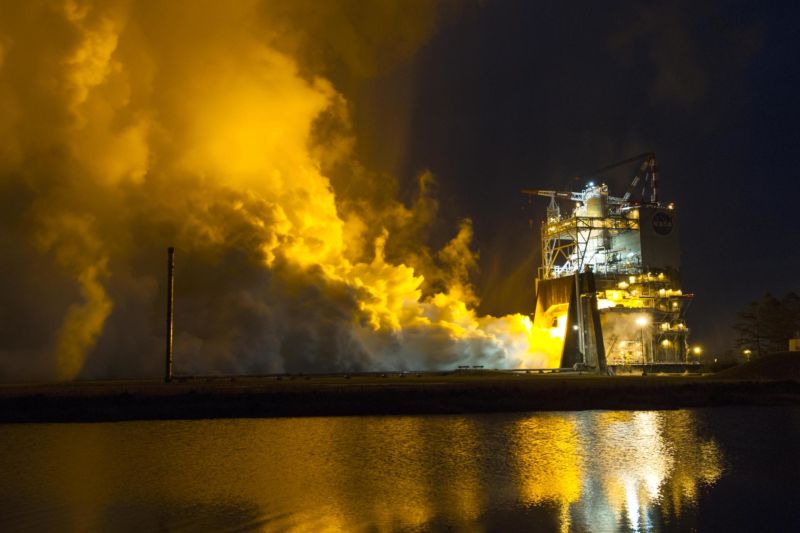
One of the primary criticisms of NASA's Space Launch System is that the program was created to save jobs at key agency contractors that otherwise would have been lost following the end of the space shuttle program. The large, new rocket includes several heritage components from the shuttle, including its main engines.
When the space shuttle program ended in 2011, NASA had 15 of the reusable main engines left over and has since built one more from spare parts. Because the expendable SLS rocket will use four engines in its core stage, this means NASA presently has enough for the first four flights of the SLS rocket.
NASA will therefore eventually need more engines for the SLS rocket—assuming the rocket flies more than a handful of flights— and so the agency awarded Aerojet Rocketdyne a $1.16 billion contract in 2016 to restart production of a modified version of the space shuttle main engine, known as the RS-25. In addition to this, the space agency placed an order for six "flight" engines, bringing the total value of the contract to $1.5 billion.
Now, as NASASpaceFlight.com reports, Aerojet is already beginning production of those six engines. "Long-lead items for the six flight engines in the contract are already being fabricated," the site reports. All of the flight engines are planned to be delivered to NASA by July, 2024, and will likely be used beginning with the fifth flight of the SLS rocket.
Long lead time
This represents quite a long lead-up time for these engines and the fifth flight. Nominally, NASA now plans to make the first SLS launch in June 2020, although that date may slip into 2021 or later if further technical or hardware problems arise with the new rocket. Eventually, NASA wants to get to a cadence of one flight every year of the rocket, but that is unlikely to happen right away. Therefore, the fifth flight of the SLS rocket is unlikely before the second half of the 2020s.
There is also some question as to whether the rocket will actually make multiple flights. By the mid-2020s, Blue Origin's large New Glenn booster should be flying. Additionally, SpaceX's larger Big Falcon Rocket may also have begun making test flights by then. Both of these boosters would offer NASA significant lift with privately developed, reusable rockets at a fraction of the cost of the SLS rocket.
For now, NASA's administrator, Jim Bridenstine, favors continued development of the SLS rocket. But he has recognized the potential of commercial space to offer the agency alternatives. "If there comes a day when someone else can deliver that, then we need to think differently," he recently said of heavy lift. "It's always evolving."Bridenstine's boss, President Trump, seems to have taken note of this as well. Earlier this year, after the launch of SpaceX's Falcon Heavy rocket, the president said, "I noticed the prices of the last one they say cost $80 million. If the government did it, the same thing would have cost probably 40 or 50 times that amount of money. I mean literally. When I heard $80 million, I'm so used to hearing different numbers with NASA.''
Indeed, for the price NASA is paying to restart the RS-25 engine production line at Aerojet, and for the delivery of six new engines, NASA could simply have bought 16 launches of the Falcon Heavy rocket, which has a lift capacity of about 80 percent that of the Space Launch System.
https://arstechnica.com/science/2018/08/work-begins-on-rocket-engines-for-sls-flights-a-decade-from-now/Bagikan Berita Ini














0 Response to "Work begins on rocket engines for SLS flights a decade from now"
Post a Comment